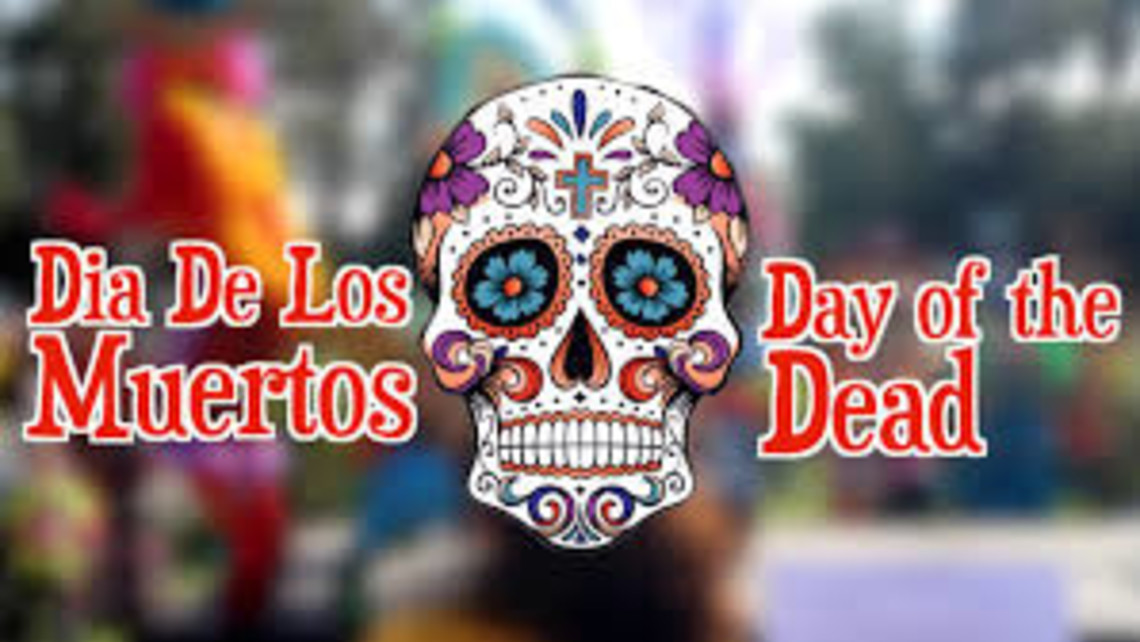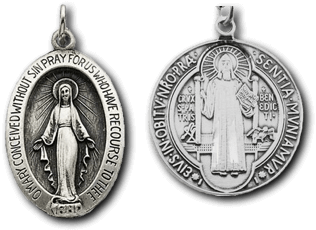DAY OF THE DEAD (DIA DE LOS MUERTOS)... IS IT A CATHOLIC HOLIDAY?

QUESTION?
Is it ok for Catholics to observe/celebrate "dia de los muertos?"I have seen alters for the dead, inside churches, during these days. I don't see it posted on Catholic calendars.
ANSWER!
That which is termed "El Dia dela Muerte" (the Day of the Dead), on the other hand, is a popular social event in Spanish/Latin American countries, especially Mexico. It's based on a religious event. On this day, according to local custom, the Christian faithful celebrate the day by assisting at Holy Mass, visiting deceased loved ones at the cemetery, and offering prayers and charitable works for the repose of the holy souls in purgatory. In more modern times, the religious sentiment has been de-emphasized by secularization, and the use of painted skull faces, sweet bread treats, and pop music are used to create a party atmosphere and even encourage debauched behavior. ibid
Some will say “but at least the day of the dead is remembered.” The blurred lines between Christianity and the pagan subculture of the Santa Muerte cult cause great confusion. We must choose. If we are Christians, we must celebrate God's justice and mercy by praying for the souls of the faithful departed rather than going along with neo-pagan festivals like Halloween and days of communication with wandering spirits. ibid
For Catholics it is good to meditate on the 4 last things often: Death, Judgment, Heaven & Hell. However, el 'dia de la muerte' is not a Catholic feast day or holy day, this is a pagan Mexican holiday that comes from the Aztecs -http://en.wikipedia.org/wiki/Day_of_the_Dead. It has been celebrated by the secularist in Mexico, no doubt to confuse Catholics and bring them back to pagan Aztec religious practices. As Catholics we cannot mix our Catholic faith with the Aztec pagan religious practices, this is known as the "sin of syncretism." As Catholics we should celebrate all saints day and all souls day like Catholics by attending, Holy Mass, praying the rosary and visiting our beloved dead in the cemetery and praying at the cemetery for the repose of their soul and lighting candles in the Church as a votive offering for our beloved dead. To many low information Mexican Catholics are mixing Catholicism with paganism because they don't know their faith. Hosea 4:6 "my people are perishing for their lack of knowledge." There are elements of truth even in pagan religions but we must not revert to pagan Hispanic practices. If we are stuck in our pagan past, we can't grow up and follow the Gospel of Jesus Christ. All those traditions had some kernals of truth, but now that we have found the fullness of truth in the Catholic Religion, why should we revert to the past and dress like our pagan ancestors that hunted for their food and worshipped false gods. Some people call this inculturation, I disagree. St Paul says it best: "[14] Do not be mismated with unbelievers. For what partnership have righteousness and iniquity? Or what fellowship has light with darkness? [15] What accord has Christ with Be'lial? Or what has a believer in common with an unbeliever? [16] What agreement has the temple of God with idols? For we are the temple of the living God; as God said, "I will live in them and move among them, and I will be their God, and they shall be my people. [17] Therefore come out from them, and be separate from them, says the Lord, and touch nothing unclean; then I will welcome you" (2 Corinthians 6:14-17).
Here is what EWTN says:
Day of the Dead
Question from Jeanette Fernandez on 10/14/2002:
What is the church's standing on Dia De Los Muertos Day? I have some family members who build altars for the deceased. They display photo's and personal posessions of the deceased. It makes me very uncomfortable. They say it is Catholic tradition. In Mexico they set out favorite food for the deceased. Please let me know if this practice is considered part of our faith.
Answer by Bill Bilton on 10/14/2002:
More than 500 years ago, when the Spanish Conquistadors landed in what is now Mexico, they encountered natives practicing a ritual that seemed to mock death. It was a ritual the indigenous people had been practicing at least 3,000 years. A ritual the Spaniards would try unsuccessfully to eradicate. The ritual is known today as Dia de los Muertos, or Day of the Dead.
The ritual is celebrated in Mexico and certain parts of the United States, including the Valley.
Celebrations are held each year in Mesa, Chandler, Guadalupe and at Arizona State University. Although the ritual has since been merged with Catholic theology, it still maintains the basic principles of the Aztec ritual, such as the use of skulls.
Today, people don wooden skull masks called calacas and dance in honor of their deceased relatives. The wooden skulls are also placed on altars that are dedicated to the dead. Sugar skulls, made with the names of the dead person on the forehead, are eaten by a relative or friend, according to Mary J. Adrade, who has written three books on the ritual.
The Aztecs and other Meso-American civilizations kept skulls as trophies and displayed them during the ritual. The skulls were used to symbolize death and rebirth.
The skulls were used to honor the dead, whom the Aztecs and other Meso-American civilizations believed came back to visit during the monthlong ritual.
Unlike the Spaniards, who viewed death as the end of life, the natives viewed it as the continuation of life. Instead of fearing death, they embraced it. To them, life was a dream and only in death did they become truly awake.
The pre-Hispanic people honored duality as being dynamic.They didn't separate death from pain, wealth from poverty like they did in Western cultures.
However, the Spaniards considered the ritual to be sacrilegious. They perceived the indigenous people to be barbaric and pagan.
In their attempts to convert them to Catholicism, the Spaniards tried to kill the ritual. But like the old Aztec spirits, the ritual refused to die. To make the ritual more Christian, the Spaniards moved it so it coincided with All Saints' Day and All Souls' Day (Nov. 1 and 2), which is when it is celebrated today.
Previously it fell on the ninth month of the Aztec Solar Calendar, approximately the beginning of August, and was celebrated for the entire month. Festivities were presided over by the goddess Mictecacihuatl. The goddess, known as "Lady of the Dead," was believed to have died at birth, Andrade said.
Today, Day of the Dead is celebrated in Mexico and in certain parts of the United States and Central America.
COPYRIGHT 2017




